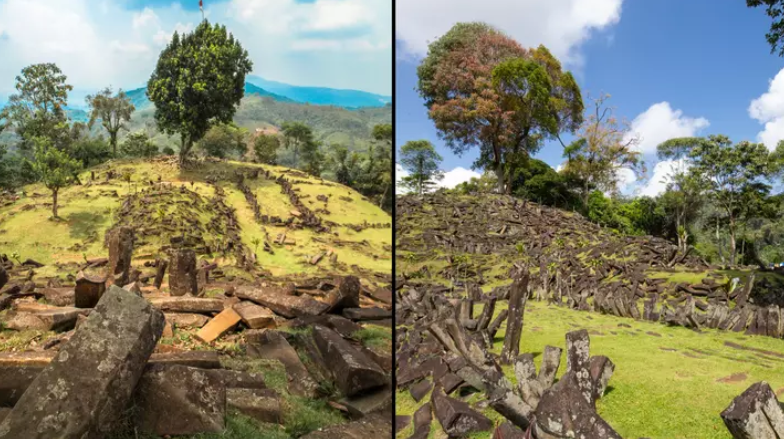Unveiling the Mystery: Is the World's Oldest Pyramid Really Not Built by Humans?
In the realm of archaeological wonders, the spotlight recently turned to Gunung Padang in Java, Indonesia, where claims emerged that a structure resembling a 'multi-layered prehistoric pyramid' was constructed a staggering 25,000 years ago. The revelation, if true, would reshape our understanding of ancient civilizations and predate even the renowned Egyptian Pyramid of Djoser. Let's delve into the controversy surrounding this archaeological anomaly.
The Groundbreaking Claim
Earlier this year, a group of archaeologists, led by Indonesian geologist Danny Hilman Natawidjaja, asserted that Gunung Padang was not a natural hill but rather a pyramid-like construction. The evidence, they claimed, stemmed from radiocarbon dating of organic soils, indicating multiple construction stages dating back thousands of years BCE.
A Skeptical Counterpoint
Not all in the archaeological community were quick to embrace these findings. Flint Dibble, an archaeologist at Cardiff University, expressed skepticism, stating that there was "no clear evidence" supporting the claim that the buried layers were intricately sculpted by human hands. Dibble argued that the formations could be a result of natural weathering and rock movement over time.
The Missing Links
Bill Farley, an archaeologist at Southern Connecticut State University, challenged the assertion that an advanced civilization lived during the last ice age. He emphasized the absence of charcoal or bone fragments in the 27,000-year-old soil samples, suggesting a lack of conclusive evidence for human activity.
Investigating the Claims
In response to the controversy, Archaeological Prospection and its publisher, Wiley, launched an investigation into the paper. Eileen Ernenwein, an archaeological geophysicist and co-editor of the journal, confirmed the ongoing inquiry, emphasizing adherence to Committee on Publication Ethics guidelines.
Natawidjaja's Defense
Amidst the scrutiny, lead researcher Natawidjaja defended the claims, dismissing detractors as the 'boy who cried wolf' and inviting researchers worldwide to conduct further studies in Indonesia. He emphasized the need to explore our human history further and challenged critics to engage in on-site research programs at Gunung Padang.
The Verdict on Gunung Padang
While Gunung Padang has been celebrated as an 'amazing, important, and cool site,' questions linger about its authenticity as the world's oldest man-made stone structure. If the reports prove inaccurate, the title may still belong to the Egyptian Pyramid of Djoser, traditionally thought to have been built around 2630 BC for the Pharaoh.
Conclusion
The debate surrounding Gunung Padang highlights the dynamic nature of archaeological discoveries. As experts engage in rigorous scrutiny, the narrative around ancient structures evolves. Whether Gunung Padang stands as a testament to human ingenuity from 25,000 years ago or serves as a cautionary tale about interpreting archaeological evidence, only further research will unveil the truth.
%20(5).png)










